Bed Bug FAQs
Facts About Bed Bugs
What items do bed bugs hide in?
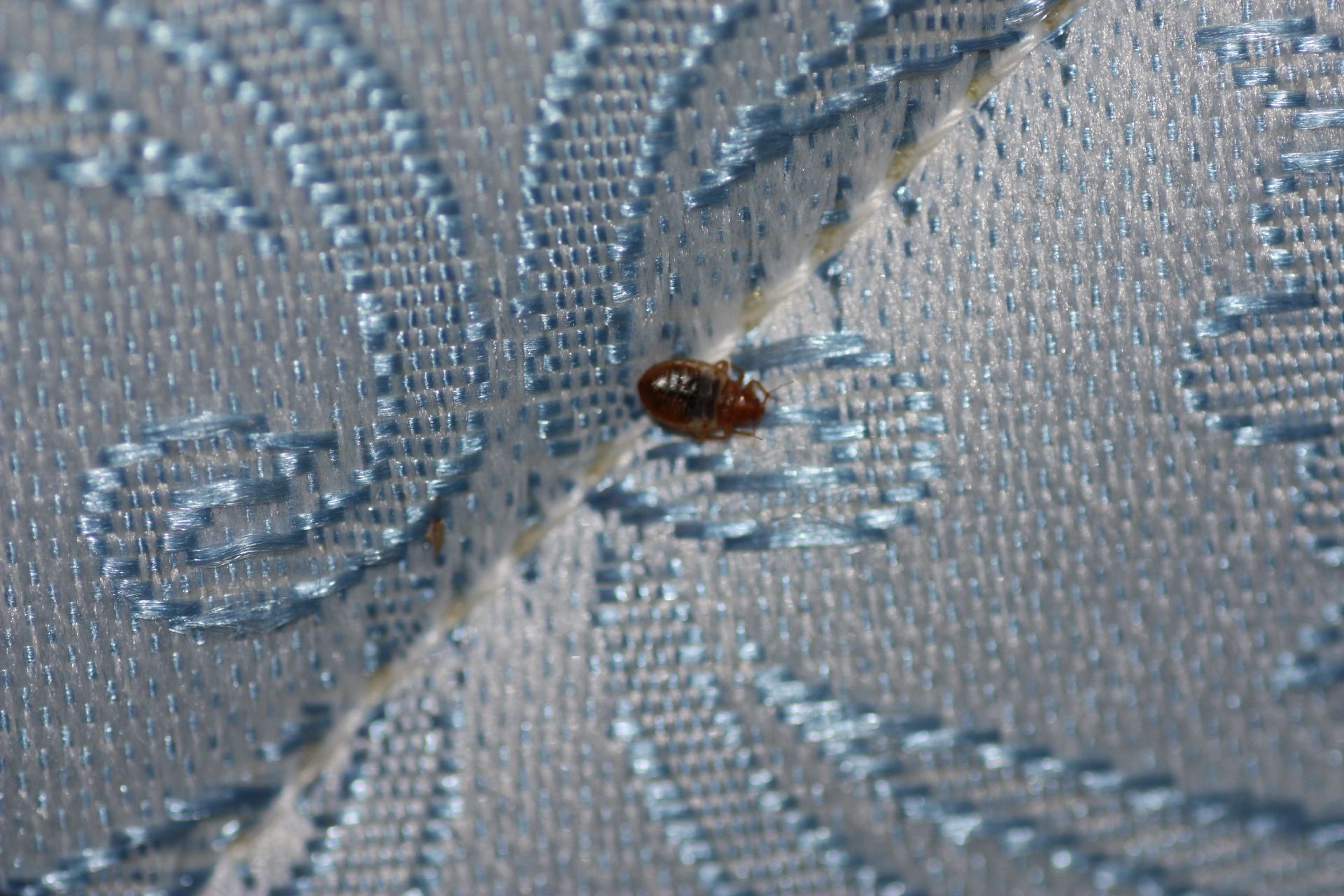
- Mattresses (especially seams, piping, and tags)
- Box springs (inside fabric or wood crevices)
- Bed frames and headboards (particularly joints and screw holes)
- Upholstered furniture (sofa seams, cushions, recliners)
- Nightstands and dressers (in drawers, joints, and behind hardware)
- Baseboards and molding
- Electrical outlets and light switches
- Curtains and curtain rods
- Behind wall hangings, mirrors, or picture frames
- Under loose wallpaper or peeling paint
- Carpets and area rugs (especially along edges)
- Luggage, backpacks, and purses
- Clothing (especially in piles or storage)
- Shoes or laundry baskets
- Books, magazines, and clutter near beds
- Cracks and crevices in walls, floors, or furniture
- Behind televisions, clocks, and electronics
- Pet beds or kennels
- Wheelchairs, walkers, and medical equipment
Where do bed bugs like to hide?
- Around and behind baseboards
- Inside wall cracks or crevices
- Behind electrical outlet plates and light switches
- Along carpet edges and under flooring
- Behind headboards attached to walls
- Behind wall décor, mirrors, and picture frames
- Inside walls near sleeping areas
- Behind or under wallpaper, paneling, or peeling paint
- Along window frames and door jambs
- Inside heating units, vents, or radiators
- Under clutter or piles of personal items near beds
- In tight seams or joints of wooden structures
- Inside or behind electrical appliances and cords
- Within ceilings or wall voids in severe infestations
What is the life cycle of bed bugs?
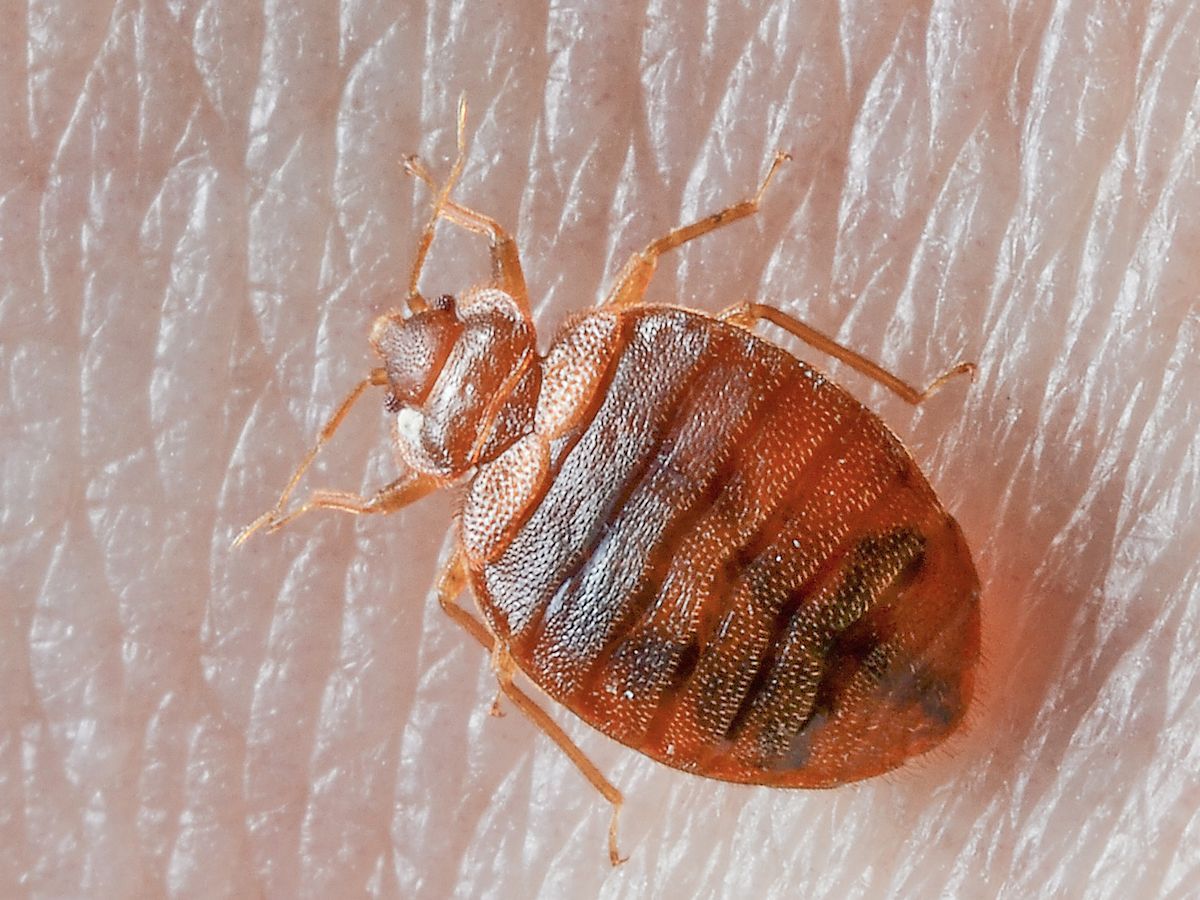
Egg:
- Tiny, white, and about the size of a pinhead.
- Females lay 1–5 eggs per day, up to 500 in a lifetime.
- Eggs hatch in about 6–10 days under normal conditions.
Nymph Stages (1st–5th instars):
- Young bed bugs (called nymphs) must feed on blood to grow.
- They molt five times, shedding their skin after each feeding.
- Depending on temperature and food availability, this stage lasts 4–6 weeks.
Adult:
- Fully developed, reddish-brown, and about the size of an apple seed.
- Adults feed every 5–10 days and can live 4–6 months, sometimes up to a year in ideal conditions.
How can I identify a bed bug?
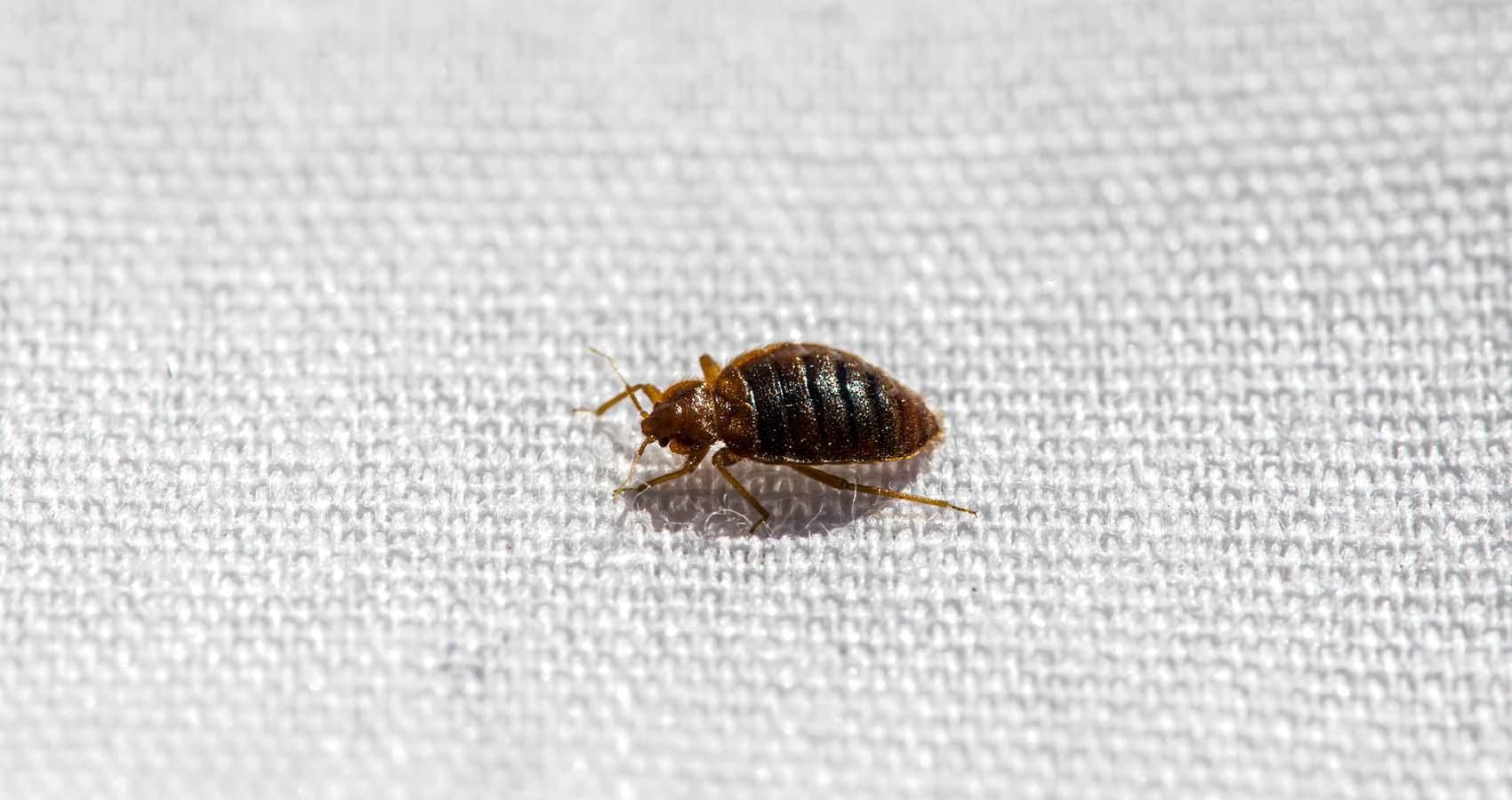
This document can help you identify. Bed bugs can be difficult to identify because they are small and often mistaken for other insects, such as carpet beetles or bat bugs.
Adult bed bugs are about 1/5 inch long, reddish-brown, oval-shaped, and flat before feeding. After feeding, their bodies become longer, rounder, and darker in color.
Immature bed bugs (nymphs) are much smaller—about the size of a poppy seed—and range from pale yellow to translucent white before feeding. As they mature through five growth stages, they gradually darken in color.
You may also notice tiny white eggs or light brown molted skins, both signs of an active infestation.
What are the signs of bed bugs?
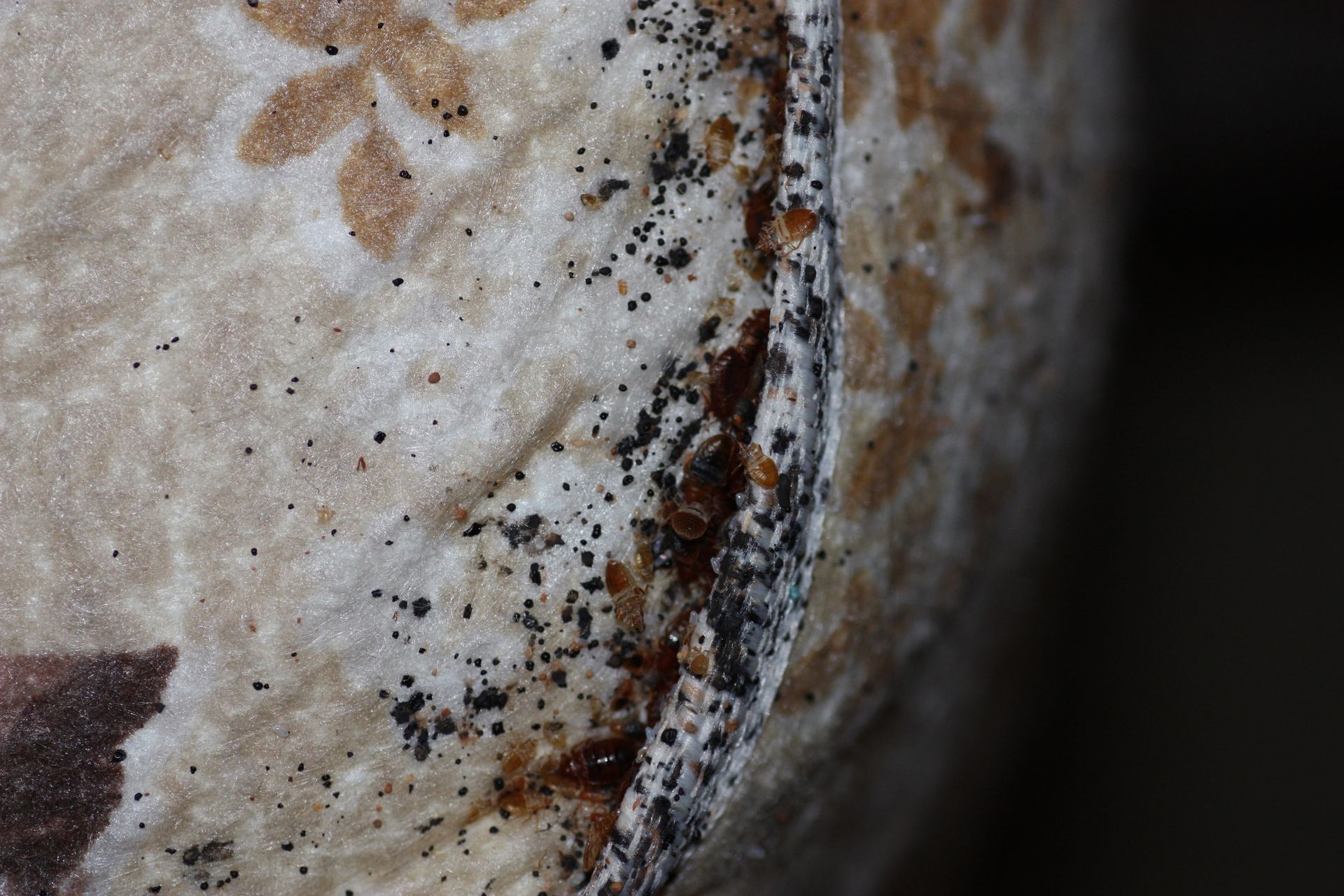
This document by Virginia Tech has more information about the signs of bed bugs.
Because bed bugs are small and hide well, you’ll often notice the signs of an infestation before seeing the insects themselves. Watch for the following indicators:
- Small red or itchy bites on your skin, often appearing in a line or cluster (though not everyone reacts to bites).
- Dark or rusty stains on sheets, mattresses, or furniture caused by bed bug droppings or crushed bugs.
- Tiny white eggs or eggshells (about 1 mm long) in mattress seams or furniture crevices.
- Molted skins (shed exoskeletons) left behind as bed bugs grow.
- A musty or sweet odor, especially in heavily infested areas, caused by bed bug scent glands.
- Live bugs found along mattress seams, headboards, or upholstered furniture—often most active at night.
How do you get rid of bed bugs?

Getting rid of bed bugs requires expertise, precision, and the right treatment plan — and SOS Pest Control has you covered. Our Associate Certified Entomologists use proven, science-based methods to eliminate bed bugs from homes and businesses across Kansas City. We offer both Thermal Heat Treatments for fast, chemical-free eradication and Fungal Spore Treatments for long-lasting, preventative protection. After a thorough inspection, our trained technicians identify the source of the infestation and customize a treatment strategy that’s safe, effective, and discreet. Whether you’re facing a small outbreak or a widespread problem, SOS Pest Control has the tools, technology, and experience to make your space completely bed bug free and for good.
The EPA has found that bed bugs can develop pesticide resistance.
Do I have to throw out my belongings?

No, as long as your personal items and furniture have been treated you dont need to throw away anything.
This document explains how to handle belongings that may be infested.
What is typical bed bug behavior?
- Hide during the day and come out at night to feed
- Prefer to stay close to where people sleep or rest
- Feed on blood for about 3–10 minutes before retreating to hiding spots
- Can survive several months without a blood meal
- Move between rooms or units through cracks, outlets, and shared walls
- Are attracted to body heat and carbon dioxide
- Lay eggs in hidden, protected areas near hosts
What do I do if I get bed bugs again?

Call us immediately at 816-237-5342 so we can stop the spread and save your home.
Are bed bugs a health risk?
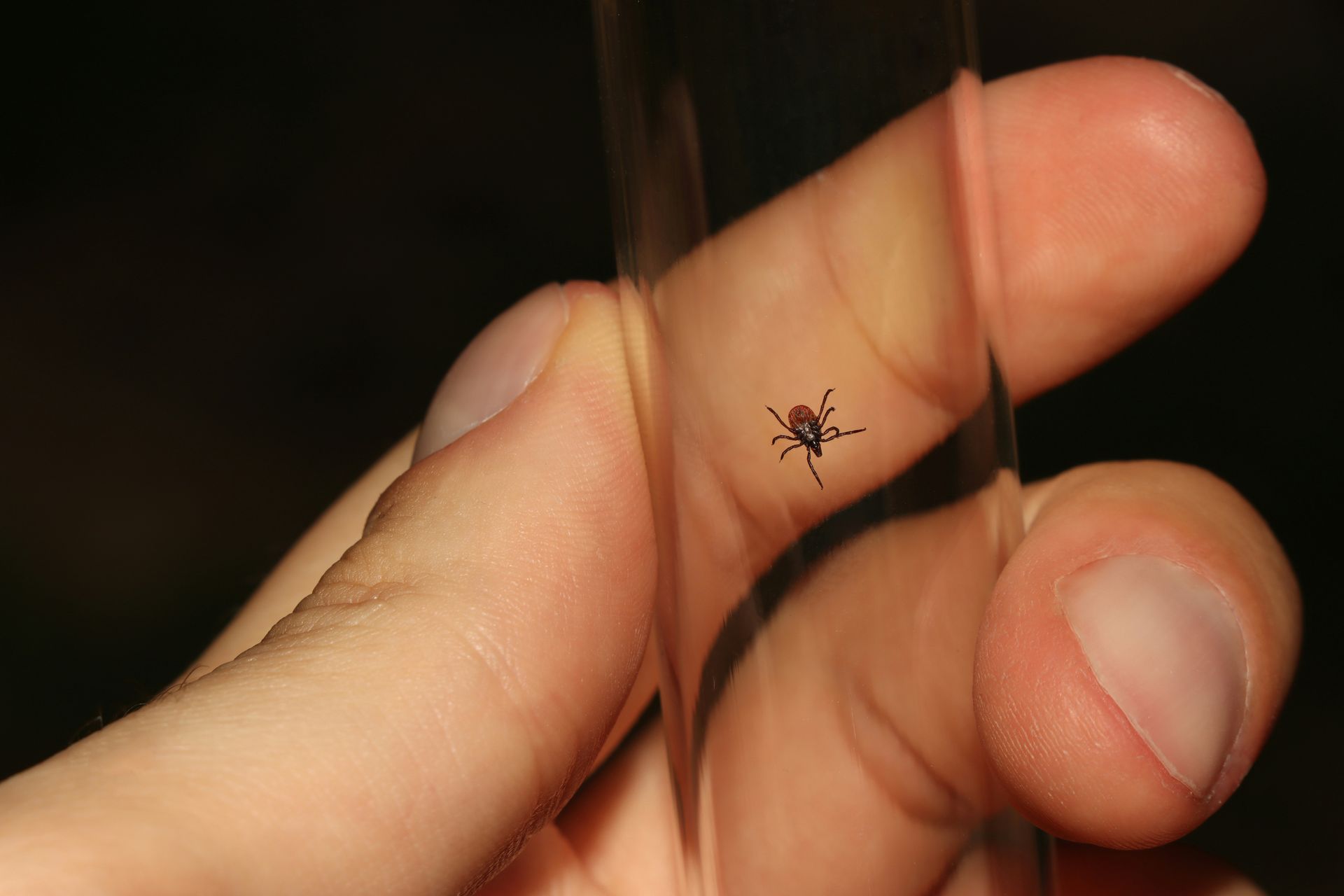
According to the CDC , bed bugs do not generally present a health risk to people, but it depends on the individual. Bed bug bites might cause an allergic reaction that could require medical attention.
Can bed bugs spread disease?
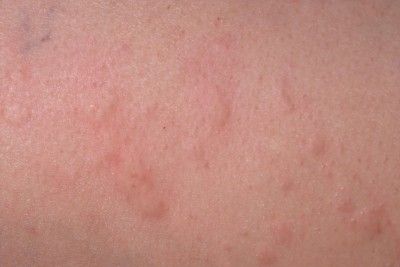
The CDC has rules that bed bugs do not generally spread diseases that can affect people. However, excessively scratching bed bug bites might lead to an increased chance of a secondary skin infection.
How did I get bed bugs?
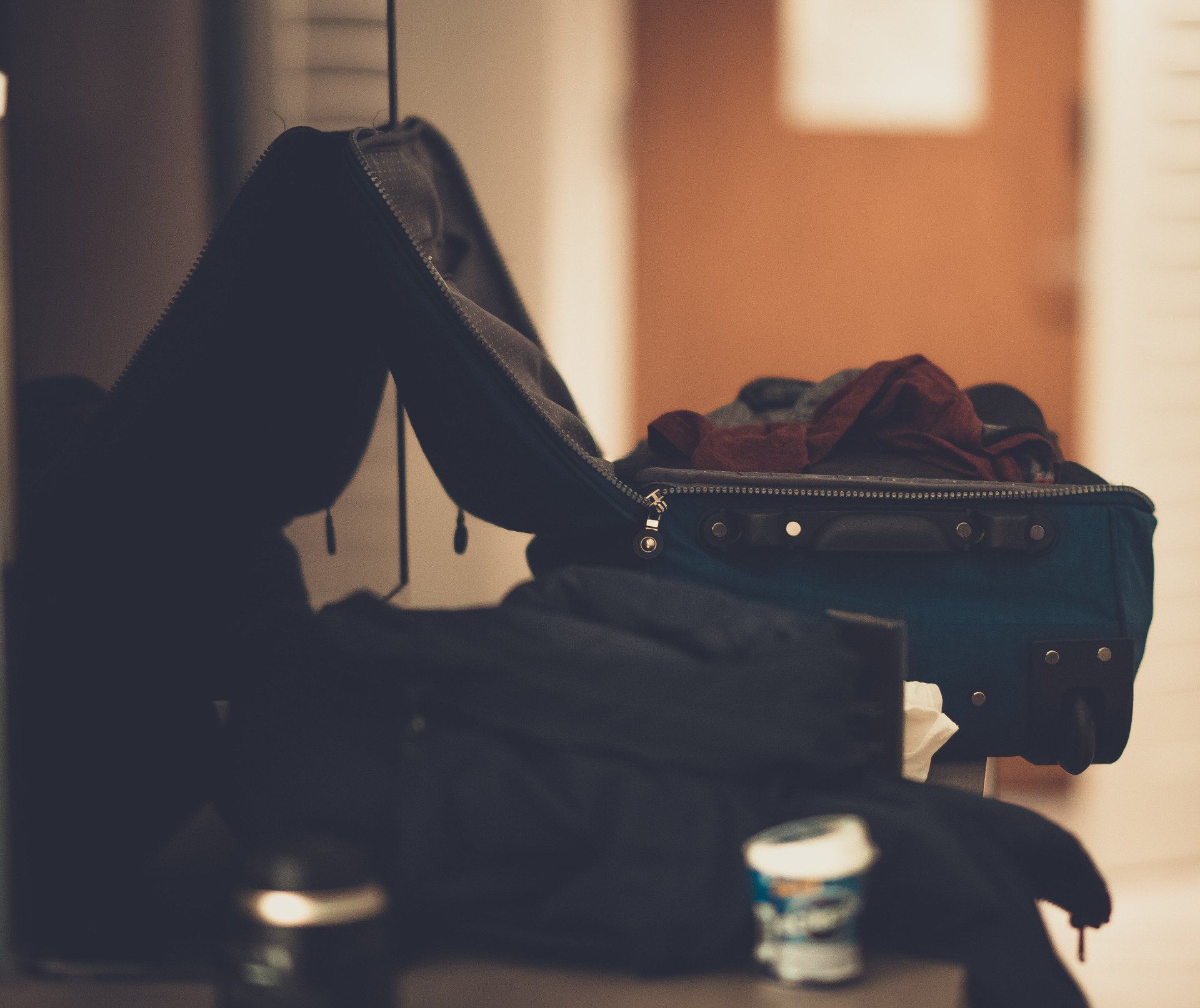
Bed bugs are excellent hitchhikers and can be picked up almost anywhere. They don’t appear because of dirt or poor hygiene — they simply travel easily from one place to another. Common ways people bring bed bugs home include:
- Staying in infested hotels, motels, or rental properties
- Bringing home used furniture, mattresses, or clothing
- Traveling on public transportation such as buses, planes, or trains
- Visiting infested homes, offices, or public spaces
- Having guests or service workers who unknowingly carry them in
- Moving between shared housing units (apartments, dorms, hotels)
Even the cleanest homes and businesses can experience bed bug problems, which is why professional inspection and treatment are key to eliminating them completely.
What do bed bugs bites look like?
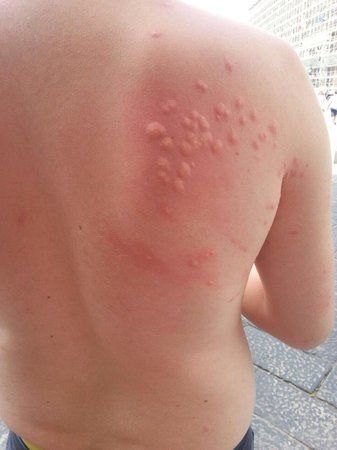
Bed bug bites often appear as small, red, itchy welts on the skin. They’re usually found on areas exposed while sleeping — such as the arms, legs, neck, and shoulders. Bites may
- Appear in a line or cluster pattern
- Become swollen, inflamed, or itchy within a few hours
- Vary in appearance from person to person — some people show no reaction at all
Because bed bug bites can look similar to mosquito or flea bites, it’s important to look for other signs of infestation (such as stains, shed skins, or live bugs) to confirm their presence.
How do I treat bed bug bites?
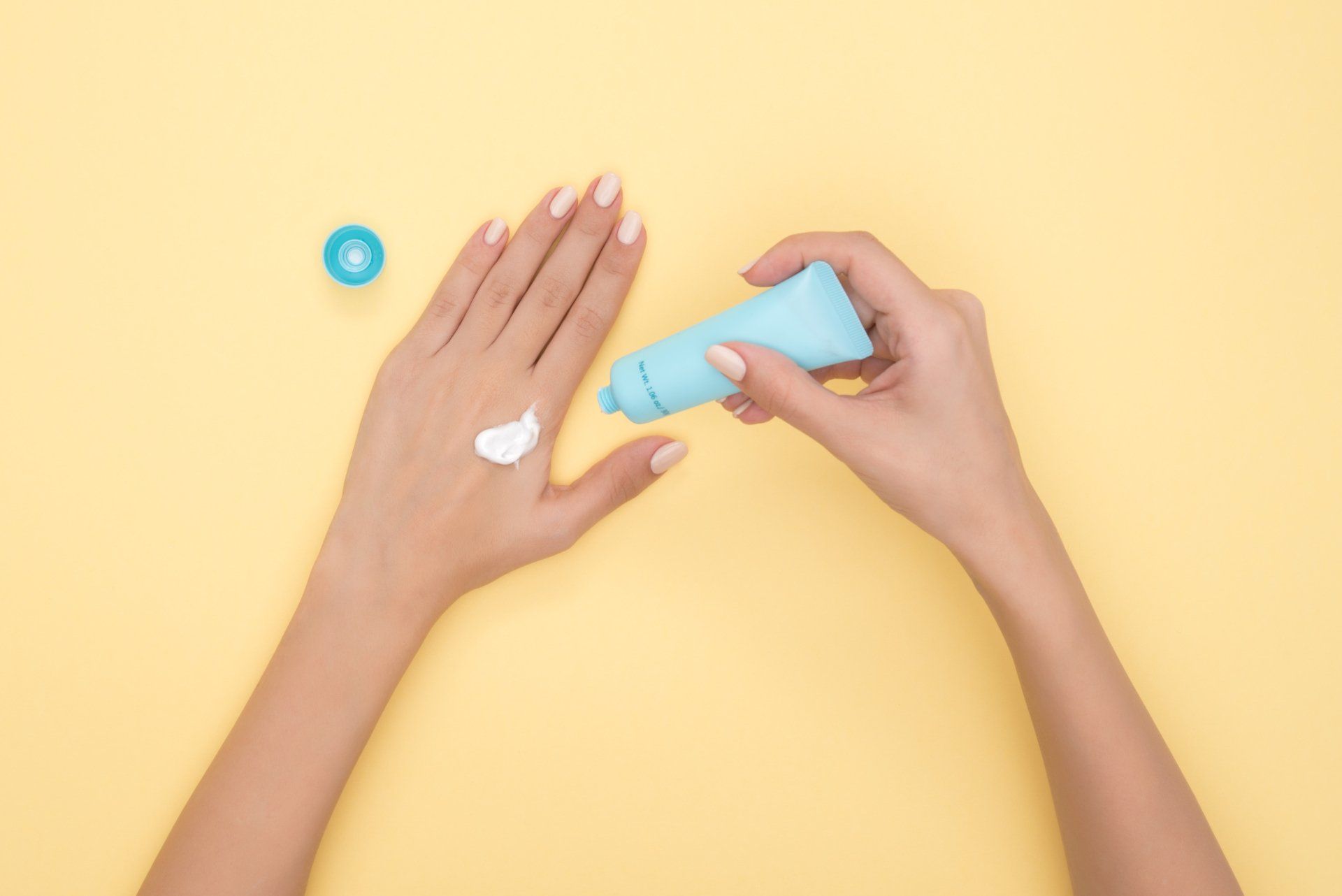
- Clean the bite area: Wash gently with soap and water to reduce the risk of infection.
- Apply a cold compress: Use an ice pack or cold cloth for 10–15 minutes to reduce swelling and itching.
- Use anti-itch creams: Over-the-counter hydrocortisone cream or calamine lotion can help relieve itching.
- Take oral antihistamines if needed: Medications like diphenhydramine (Benadryl) can ease itching and allergic reactions.
- Avoid scratching: Scratching can lead to infection and prolong healing.
- Keep nails trimmed: Helps prevent breaking the skin if you do scratch.
- Monitor for infection: Seek medical attention if bites become red, swollen, painful, or develop pus.
- Treat your home: Contact a professional pest control service to eliminate bed bugs and prevent further bites.
Learn more here at the American Academy Dermatology Association website.
How should I handle bed bugs as a landlord?
EPA Bed Bug Site- Respond promptly: Address tenant reports immediately to prevent the infestation from spreading.
- Inspect the property: Hire a professional pest control service to confirm the presence and extent of bed bugs.
- Notify tenants: Inform all affected tenants about the situation and provide guidance on preparation for treatment.
- Coordinate treatment: Work with licensed exterminators to schedule and oversee proper bed bug eradication.
- Prepare the unit: Ask tenants to declutter, launder bedding, and move furniture as directed by pest control professionals.
- Document everything: Keep records of complaints, inspections, treatments, and communications for legal and safety purposes.
- Follow up: Conduct post-treatment inspections to ensure the infestation is fully resolved.
- Prevent future infestations: Encourage regular inspections, tenant education, and proper housekeeping practices.
Does Kansas have bed bug laws?
EPA State LawsHere are the laws that affect the treatment of bed bugs in the State of Kansas.
Kan. Admin. Regs. § 4-27-2, Lodging Establishments -Definitions
- Bed bugs are defined as an "imminent health hazard".
Kan. Admin. Regs. § 4-27-5, Lodging Establishments -Imminent Health Hazard
- Licensees of lodging establishments shall cease operations in areas where an "imminent health hazard" has been found and will notify the Secretary of Agriculture within 12 hours.
- A lodging establishment is a "short-term rental" such as a motel, hotel, resort, or inn.
Kan. Admin. Regs. § 4-27-9, Lodging Establishments -Guest Rooms
- No guest room that is infested by insects, rodents, or other pests shall be rented until the infestation is eliminated.
Will washing clothes on vacation prevent bed bugs?
 Call Us
Call UsWashing your clothes while on vacation can help reduce the risk of bringing bed bugs home, but it won’t completely prevent an infestation. Bed bugs can hide in luggage, shoes, and other belongings, so even freshly washed clothes could be exposed again. The most effective prevention is to inspect your hotel room, keep luggage off the bed and floor, and use sealed bags for dirty or clean clothes. Once home, laundering and drying clothes on high heat is the safest way to kill any hitchhiking bed bugs.
Is it a bed bug bite or a flea bite?

While fleas and bed bugs can look very similar, there are distinguishable signs.
Location on the body:
- Bed bug bites: Often appear on exposed areas like arms, legs, neck, and face.
- Flea bites: Usually around the ankles, feet, and lower legs.
Bite pattern:
- Bed bug bites: Often appear in a line or cluster (“breakfast, lunch, dinner” pattern).
- Flea bites: Tend to be scattered or in small groups of 2–3.
Appearance:
- Bed bug bites: Red, swollen, sometimes with a darker red center; may blister in sensitive individuals.
- Flea bites: Small, red bumps with a central puncture; often surrounded by a halo of redness.
Itching intensity:
- Bed bug bites: Can be very itchy, sometimes delayed several hours or days after the bite.
- Flea bites: Usually very itchy immediately after the bite.
Timing of bites:
- Bed bug bites: Typically occur at night when sleeping.
- Flea bites: Can occur anytime, especially if pets are present.
Associated environment:
- Bed bug bites: Found in homes, hotels, and places where people sleep.
- Flea bites: Often linked to pets and areas where animals frequent.
For more information, please visit Tom's Guide.
What scents repel bed bugs?
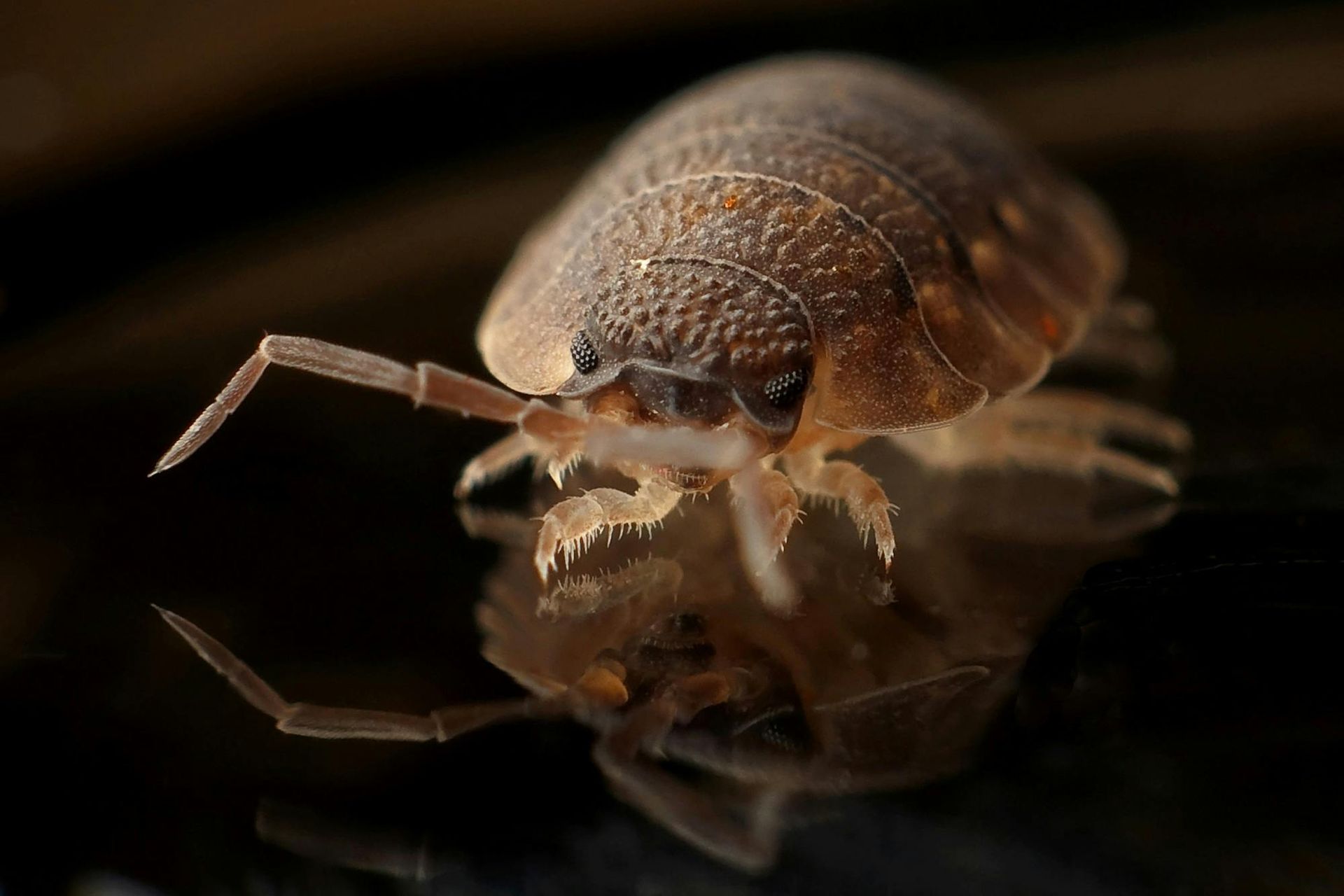 Button
Button- Lavender – often used in essential oils or sachets.
- Peppermint – strong minty scent can deter bed bugs temporarily.
- Eucalyptus – essential oil may help mask human scent.
- Tea Tree Oil – thought to have insect-repelling properties.
- Clove – pungent aroma can discourage bed bugs.
- Lemongrass – citrusy scent that may act as a deterrent.
See this website for more information:
How long can bed bugs survive?
Bed bugs are incredibly resilient and can survive for months without feeding, but they won’t go away on their own. Adults can live 4–6 months without a blood meal, and in cooler environments, they may survive even longer. Because of their hardiness and ability to hide in small cracks and furniture, professional treatment is the only reliable way to fully eliminate an infestation—waiting them out is not effective.
Learn About Bed Bugs
How can I prevent bed bugs?
Who is at risk?
How do you eradicate bed bugs?
How are bed bugs killed?
Additional Bed Bug Resources
Bed Bug Commercial Services
Bed Bug Residential Services
Bed Bug News

Our Guarantee
Feel confident in choosing SOS Pest Control for all your pest control needs with our 90-Day Bed Bug-Free Guarantee! It ensures your home will remain bedbug free for up to three months after our thermal treatment in your home or commercial property.
